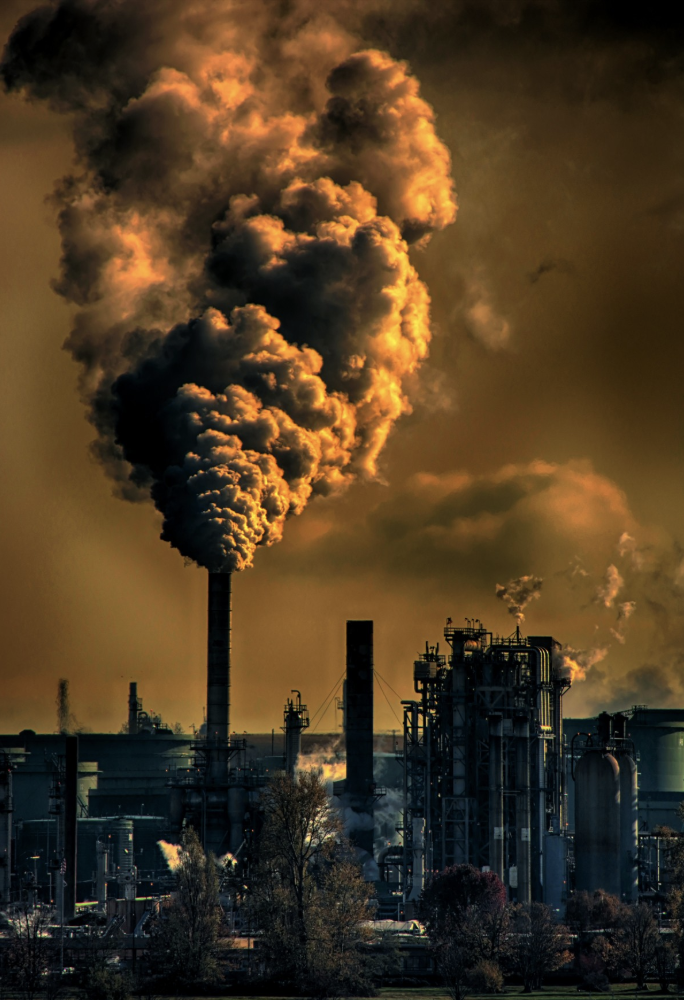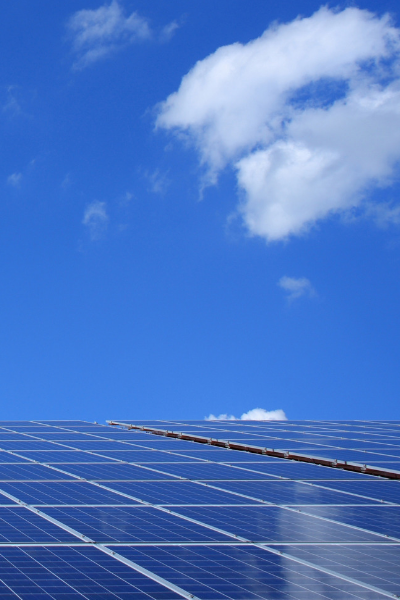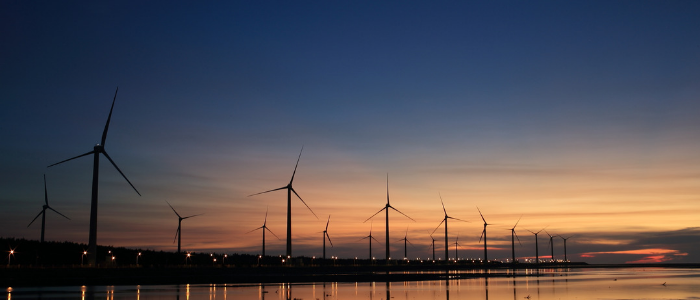We urgently need to shut down our state’s remaining coal-fired power plants that are polluting our air, poisoning our waters, sickening our bodies, emptying our pocketbooks, and degrading our environment. As part of the Sierra Club’s enormously successful Beyond Coal campaign — which has helped shut down more than half of our nation’s coal plants since 2010 — we've been fighting to end our reliance on fossil fuel and to spearhead the transition to clean and renewable energy, including right here in Wisconsin. Our goal is to harness the power of grassroots energy to push utilities toward a more sustainable future.
Currently, we’re targeting three plants in Wisconsin that we desperately need to close — Elm Road in Oak Creek, Columbia in Pardeeville, Madgett in Alma, Weston in Rothschild, and the Manitowoc Municipal plant in Manitowoc — and another fracked gas plant that we need to stop from being built — the NTEC plant. Click here to learn more about our current campaigns
Right now, our planet is at a tipping point. Eliminating our dependence on fossil fuels and reversing climate change will be an enormous challenge, but it is possible. If we choose not to act, Wisconsin faces major disruptions to everything from agriculture to water resources to public health. Through action, we can clean our environment, grow our economy, and provide a lasting future for generations to come.
Why we need to move beyond coal to clean energy
 Wisconsin burns a lot of coal — 22 million tons of it a year, in fact. With seven major coal plants still operating around the state, coal produces nearly half of Wisconsin’s electricity. Electricity isn’t the only thing coal produces — it also generates massive quantities of hazardous pollutants that harm our health and environment. For example, burning coal spews out carcinogenic particulates into the air and toxic heavy metals into the water, leading to a host of potentially fatal illnesses like lung cancer, heart disease, brain damage, and birth defects. Simultaneously, it degrades ecosystems by destroying habitats, damaging plant life, killing aquatic species, and contributing to climate change. Not to mention, it’s more expensive than most other sources of energy, meaning it poses a drain on our state’s economy and increases the financial burden on our state’s residents. Essentially, our dependence on coal is disastrous — it harms our health, our environment, and our economy. Click here to learn more about the cost of coal
Wisconsin burns a lot of coal — 22 million tons of it a year, in fact. With seven major coal plants still operating around the state, coal produces nearly half of Wisconsin’s electricity. Electricity isn’t the only thing coal produces — it also generates massive quantities of hazardous pollutants that harm our health and environment. For example, burning coal spews out carcinogenic particulates into the air and toxic heavy metals into the water, leading to a host of potentially fatal illnesses like lung cancer, heart disease, brain damage, and birth defects. Simultaneously, it degrades ecosystems by destroying habitats, damaging plant life, killing aquatic species, and contributing to climate change. Not to mention, it’s more expensive than most other sources of energy, meaning it poses a drain on our state’s economy and increases the financial burden on our state’s residents. Essentially, our dependence on coal is disastrous — it harms our health, our environment, and our economy. Click here to learn more about the cost of coal
To make things worse, the waste products of burning coal linger in the environment for decades and wreak havoc on our communities, even after coal plants get shut down. Coal ash — what’s leftover after coal is burned — can seep into the groundwater and contaminate drinking water systems with heavy metals and prevent residents from using their own tap water. Click here to learn more about coal ash pollution
With the harms of coal so apparent, it’s becoming increasingly clear that we need to move beyond coal. But we still need electricity — so what should power our communities? Some fossil fuel proponents insist that gas is the solution, but it is not. Gas still contributes to climate change, leads to air pollution, perpetuates the environmentally devastating practice of fracking, and locks in greenhouse gas emissions for decades. We don’t just need to move beyond coal — we need to move beyond all fossil fuels. Click here to learn more about why we need to move beyond gas
 Instead of fossil fuels, we need to embrace clean and renewable energy sources like wind and solar power. These energy sources are not only sustainable and environmentally-friendly — contributing no pollution while in operation — but they are increasingly becoming cheaper than other dirtier alternatives. Plus, they create jobs and can fuel economic growth while mitigating climate change and protecting the environment. They’re win-wins. Click here to learn more about clean, renewable energy
Instead of fossil fuels, we need to embrace clean and renewable energy sources like wind and solar power. These energy sources are not only sustainable and environmentally-friendly — contributing no pollution while in operation — but they are increasingly becoming cheaper than other dirtier alternatives. Plus, they create jobs and can fuel economic growth while mitigating climate change and protecting the environment. They’re win-wins. Click here to learn more about clean, renewable energy
What about nuclear power and other high-tech ways to avoid the worst of climate change? Despite avoiding carbon emissions, nuclear power isn’t sustainable — it still harms the environment and is too expensive. While we should safely maintain our current fleet, we shouldn’t construct any new nuclear plants. Some people argue that, instead of clean energy, we should suck the extra carbon out of the air to prevent climate change. While some strategies, like planting more trees to absorb carbon dioxide, are good ideas, the climate-friendly (and often the most affordable) solutions are to reduce pollution at the source. Click here to learn more about nuclear energy and here to learn more about negative emissions technologies
In addition to adopting clean and renewable electricity, it’s important to develop policies that will increase energy efficiency and reduce energy use. Using less energy is one way to immediately cut down on our reliance on coal and other fossil fuels. Click here to learn more about energy efficiency
Policies
Moving beyond coal is a massive project that demands government action and popular mobilization to take on the fossil fuel industry and other vested interests. It would be unfair, and ineffective, to rely on individuals alone to effect the necessary changes we need our state government to get its act together and do its job to protect our health, environment, and economy.
To help move toward a clean energy future, here are some policies that the state of Wisconsin needs to adopt:
-
Clean Energy Choice legislation (also known as a Third Party Power Purchase Agreement) is a simple clarification of current law that would allow a third party to install, maintain, and sell power from a renewable energy system back to those homeowners or businesses.
-
Net-metering requires all utilities to buy back customer-generated renewable energy at wholesale rates and provide credit to customers that can be used at other times for excess energy produced. While Wisconsin has adopted some net-metering policies, we currently cap system size at 20 kW, and utilities vary widely in the way they calculate credits — creating uncertainty for homeowners and clean energy businesses. Instead, we need a clear and all-encompassing system.
-
We need to raise the Renewable Portfolio Standard (RPS) to require utilities to achieve 25 percent renewable energy by 2025. Right now, Wisconsin's RPS only requires utilities to adopt 10 percent renewable electricity. But if we are to avert the worst of climate change and protect our environment and health — all while saving money — we need to dramatically accelerate the rollout of renewable energy sources. To do so, we cannot wait for utilities to take action — we must demand action and push them to develop clean energy as soon as possible, and a legal obligation is the only way to ensure they do so.
-
We must restore funds for Focus on Energy and eliminate the legislative provision that caps energy efficiency investments at 1.2 percent of utility revenues. If we want to regain our position as an energy efficiency leader, funding should also be attached to goals to reduce electricity and natural gas use by 2 percent and 1.5 percent per year, respectively. Expanding renewable energy and energy efficiency in Wisconsin will keep more money within local economies, create jobs, and reduce the billions we send out of state annually to import coal, oil, and gas. It will also reduce electricity’s enormous contribution to climate change and make our air safer to breathe.
We won't be able to adopt these policies unless there's a popular movement pushing the government and utilities to take action, so we need your help to move beyond coal. If you’d like to contribute, please volunteer with us!
